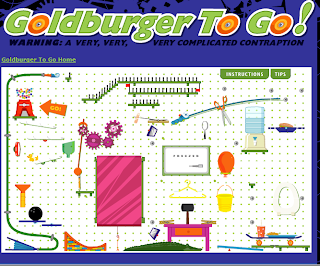 Integration...a big idea. In the past, I have thought of integration as a form of connecting topics or themes across content areas. Think about teaching Ecosystems and reading about animals, using animals to measure or do math, as well as learning about it in science. That's really more like Cross Curricular, isn't it?
Integration...a big idea. In the past, I have thought of integration as a form of connecting topics or themes across content areas. Think about teaching Ecosystems and reading about animals, using animals to measure or do math, as well as learning about it in science. That's really more like Cross Curricular, isn't it?But Integration is when we teach thinking ideas or structures in all areas of your curriculum. For example, we are learning about compare and contrast this month. How are we doing this?
First we introduced the concept of Compare and Contrast as a whole group using photos of colonial Virginia houses based on architecture of German and English settlers. By observing the pictures, students were able to notice what was similar and different.
Then we introduced the signal words: Compare (how they are alike) and Contrast (how they are different). Signal words for compare: also, both, too, similar, the same as,more, like, as well as, alike. Signal words for contrast: but, however, too, different, from, compared to, in contrast, unlike, less.
We purposefully integrated this skill of compare and contrast into everything we did - Social studies, math, reading and science.
In Math, we are teaching polygons. As part of this unit, we were able to sort and classify polygons based on common attributes. We were able to manipulate the polygon shapes with a partner, play guess my rule, and sort shapes on the Smart Board. When we compared the shapes we used the signal words to talk about similarities and differences.
In reading, we compared and contrasted character traits in our Trickster Tales from around the world. How was Brer Rabbit like Anansi? How were they different? We read non-fiction selections about seals and sea lions and compared how they behave in the wild. We circled signal words that we could find in the passage. Compare words were pink (as was the compare statement area). Contrast words were in purple (and so wat the contrast statement area.)
In Science...we compared and contrast force and motion concepts with exit cards: How are pushes and pulls alike? Different? Rollercoasters vs. Ramps & Cars, Rube Goldberg vs. Roller coasters, Kinetic vs. Potential....
I am offering this resource for FREE. Click here to get it - I put two cards on a page for a total of 8 exit cards. Enjoy it!












